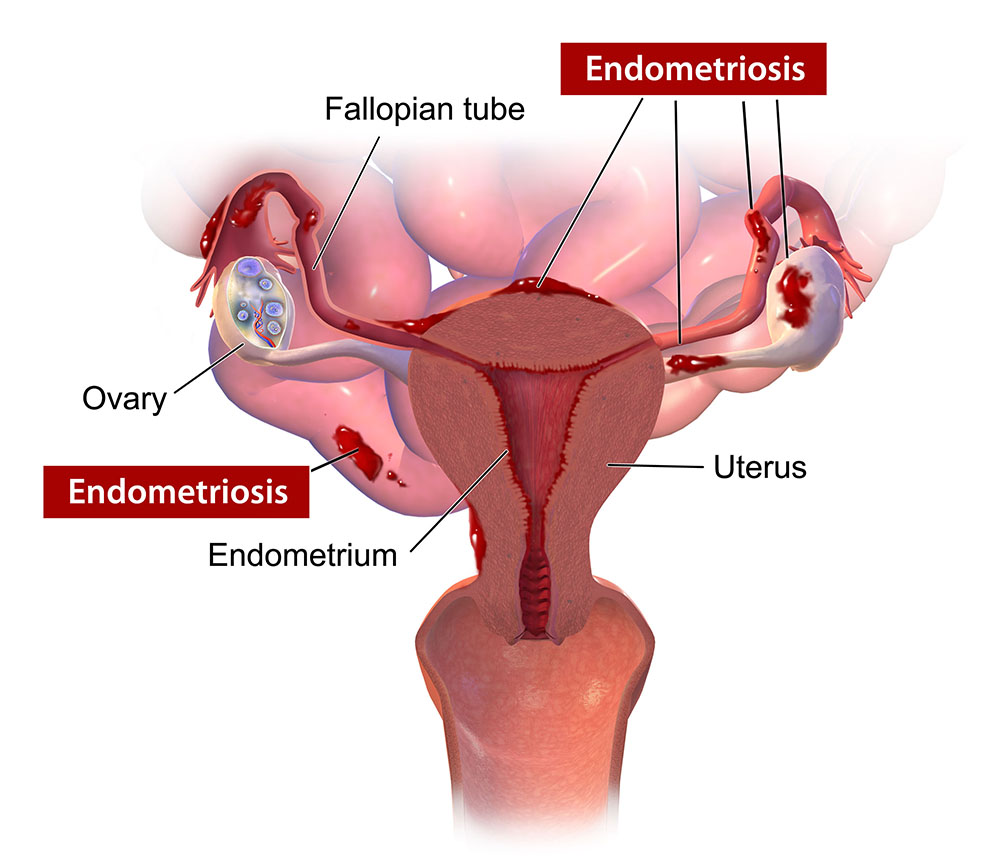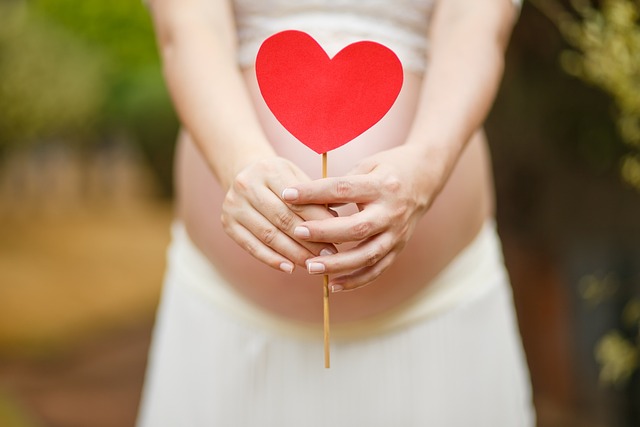
Understanding Endometriosis
Causes of Endometriosis
Symptoms and Diagnosis
Treatment for Endometriosis
Pankaj Singhal, MD, MS, MHCM
Endometriosis and Robotic Surgeon in Bay Shore and New York, NY

A Leader in the Field of Endometriosis and Minimally Invasive Gynecologic Surgery
An experienced healthcare professional with expertise in women’s health, gynecologic cancer, healthcare management, and an MBA in finance.
- Industry expertise with over 12 years of experience in both academic & private health care settings, physician practice management and executive leadership.
- Consistent track record as executive leader and proven ability to excel in complex and dynamic multi-faceted healthcare settings.
- Effective at identifying opportunities for significant value creation (economical, educational, market share and societal). Launched new ACGME fellowship programs, expanded residency programs, launched new system level service lines, expanded clinical market share by 200%, developed physician score cards.
- Proven track record as quality improvement champion, challenges status quo and removes inefficiencies in the system. Developed system wide score cards-OB/GYN, MFM, Gyn Onc, standardized orders sets, consents forms, transfer policies. Improved physician compliance with quality measures.
- Performed over 10,000 robotic gynecologic, endometriosis, and cancer surgeries.
- Known for taking on the most challenging surgery cases that other doctors/centers turn away.
Most Complex Robotic Endometriosis Cases
Bowel, bladder, ureters, nerves are managed by us.
Endometriosis is not cancer but grows like one.
Being a cancer surgeon allows me to resect endometriosis with unparallel precision.
Understanding Endometriosis
Endometriosis is a chronic disorder characterized by the presence of tissue resembling the endometrial lining outside the uterus. This tissue often leads to menstrual bleeding and is commonly associated with abnormally painful and heavy periods, pelvic pain, intense cramping, and painful sexual intercourse (dyspareunia). The growth of these lesions is influenced by estrogen, noncancerous in nature, inflammatory, driven by stem cells, and may occasionally worsen as time goes on.
It is believed that around 176 million women worldwide are affected by this condition, which plays a significant role in infertility and long-lasting pelvic pain. Endometriosis has also been linked to various other medical conditions, including autoimmune disorders, fibroids, adenomyosis, interstitial cystitis, and even certain types of cancer. In the United States, endometriosis ranks among the top causes of laparoscopic surgery and hysterectomy. The economic implications of this condition are substantial, with businesses facing significant losses in productivity and increased absenteeism due to the disease.
Endometriosis is commonly categorized into four stages or types, which are determined by the location, extent, and severity of the growth of endometrial tissue, as well as the presence of associated scar tissue or adhesions:
- Stage I or Minimal: During this stage, there are small implants or lesions found on or in close proximity to the organs within the pelvic cavity, and there is minimal or no scarring or adhesions.
- Stage II or Mild: During this stage, there is a higher number of implants or lesions, and there may be the presence of scar tissue or adhesions surrounding the organs in the pelvic cavity.
- Stage III or Moderate: During this stage, numerous deep implants or lesions are observed, and there is considerable scarring and the presence of pelvic adhesions within the pelvic cavity.
- Stage IV or Severe: During this stage, a multitude of deep implants or lesions are present, and there is extensive scarring and adhesions that can affect multiple organs within the pelvic cavity, such as the bladder, bowel, and uterus.
It is important to recognize that the severity of symptoms does not necessarily align with the stage of endometriosis. Certain individuals with severe endometriosis may only experience mild symptoms, whereas others with minimal endometriosis may endure intense pain and other symptoms. Diagnosis and classification of endometriosis rely on various factors, including symptoms, findings from physical examinations, and imaging tests or laparoscopy, which are best determined by healthcare professionals.
Where does Endometriosis Occur?
Endometriosis is a condition characterized by the presence of tissue resembling the endometrium (the uterine lining) outside the uterus. This tissue can be found in different areas of the pelvic cavity, including the ovaries, fallopian tubes, bladder, bowel, and the lining of the pelvic cavity. Although rare, there have been instances where endometrial tissue has been detected in other areas of the body, such as the lungs, but this occurrence is highly uncommon.
The presence of endometrial tissue outside the uterus can lead to inflammation, scarring, and pain, especially during menstruation.

Image source: Blausen Medical, 2014
Causes of Endometriosis
While the precise cause of endometriosis remains unknown, several theories have been proposed to elucidate the mechanisms behind the growth of endometrial tissue outside the uterus. Here are some potential causes:
- Retrograde menstruation: According to this theory, it is proposed that during menstruation, a portion of menstrual blood containing endometrial cells refluxes through the fallopian tubes into the pelvic cavity instead of being expelled from the body through the vagina. Subsequently, these cells implant and proliferate on the organs within the pelvic cavity.
- Embryonic cell growth: According to this theory, it is suggested that cells present in the pelvic cavity have the potential to transform into endometrial tissue in response to hormonal or other signaling factors.
- Immune system dysfunction: There is evidence linking endometriosis to immune system dysfunction, which could potentially create an environment where the growth of endometrial cells outside the uterus becomes possible.
- Genetics: The familial nature of endometriosis indicates a possible involvement of specific genes in the development of this condition.
- Environmental factors: There is a potential correlation between exposure to specific environmental toxins or chemicals and an elevated risk of developing endometriosis.
It is important to acknowledge that while these theories provide potential explanations for the growth of endometrial tissue outside the uterus, they are not yet fully comprehended or substantiated. Further research is required to enhance our understanding of the fundamental causes of endometriosis.
How Does Endometriosis Affect Pregnancy and Fertility?
Endometriosis can have a significant impact on fertility and pregnancy. Here’s how it can affect:
- Fertility: The presence of endometriosis can lead to the development of scar tissue and adhesions, which can potentially block or damage the fallopian tubes. This obstruction may impede the sperm’s ability to reach the egg, making fertilization challenging. Additionally, hormonal imbalances caused by endometriosis can disrupt ovulation, further complicating conception.
- Miscarriage: Women with endometriosis may face a higher risk of miscarriage. This increased risk may be attributed to the inflammation caused by the condition in the pelvic area, which can negatively impact the successful implantation of the embryo.
- Ectopic pregnancy: The likelihood of an ectopic pregnancy, where the fertilized egg implants outside the uterus, is higher in cases of endometriosis. Typically, the fallopian tubes are the site of implantation in ectopic pregnancies. This condition is considered life-threatening and necessitates immediate medical intervention.

- Preterm labor: Women with endometriosis who become pregnant are at an increased risk of experiencing premature labor and delivery, which occurs before the full term of pregnancy is reached.
- C-section delivery: Due to the elevated risk of complications during labor and delivery, women with endometriosis may have a greater chance of requiring a cesarean section (C-section) for the safe delivery of their baby.
It is important to emphasize that not all women with endometriosis will encounter difficulties with fertility or experience complications during pregnancy. Furthermore, various treatment options are accessible to help effectively manage the condition and enhance the likelihood of successful conception and a healthy pregnancy.
Symptoms and Diagnosis of Endometriosis
Some commonly observed symptoms of endometriosis include:
- Painful periods (dysmenorrhea): This is the primary and most prevalent symptom of endometriosis. Women with endometriosis endure severe menstrual cramps that can be incapacitating.
- Chronic pelvic pain: Women with endometriosis frequently experience persistent pain in the lower abdomen, pelvis, or lower back that can persist for weeks or months.
- Pain during sex: Women with endometriosis may encounter pain during sexual intercourse, particularly with deep penetration.
- Painful bowel movements or urination: Endometriosis can cause discomfort and pain during bowel movements or urination, particularly in conjunction with the menstrual cycle.
- Infertility: The functionality of the ovaries, fallopian tubes, and uterus may be affected by endometriosis, leading to infertility.
Diagnosing endometriosis can pose challenges as its symptoms can resemble those of other conditions such as pelvic inflammatory disease or irritable bowel syndrome. Physicians employ various methods to diagnose endometriosis, including:
- Pelvic exam: During a pelvic exam, the doctor can conduct a manual examination to detect any irregularities within the pelvis, such as cysts or scars.
- Imaging tests: To identify potential signs of endometriosis, medical professionals may employ imaging techniques such as ultrasound, MRI, or CT scans to generate detailed images of the reproductive organs.
- Laparoscopy: Laparoscopy is a minimally invasive surgical procedure that enables a doctor to visually examine the pelvic area for endometrial tissue located outside the uterus. By inserting a slender tube equipped with a camera through a small incision in the abdomen, the doctor can view the pelvic region and, if needed, perform a biopsy.
If you encounter any symptoms associated with endometriosis, it is crucial to arrange an appointment with NYGS. This will facilitate a discussion regarding the most suitable diagnostic and treatment options tailored to your specific needs.
What Happens If my Endometriosis is Left Untreated?
If left untreated, endometriosis can give rise to various potential complications, which include:
- Chronic pain: The pain associated with endometriosis can become persistent, impacting daily activities, work, and relationships.
- Infertility: Scarring and adhesions caused by endometriosis can hinder fertility by blocking or impairing the functionality of the fallopian tubes and ovaries.
- Ovarian cysts: Endometriosis can lead to the development of cysts on the ovaries, causing pain and potentially affecting fertility.
- Bowel and bladder problems: Endometrial tissue growth on or around the bladder and bowel can result in pain, bleeding, and issues with bowel and bladder function.
- Increased risk of ovarian cancer: Some studies indicate a heightened risk of ovarian cancer in women with endometriosis, though the overall risk remains low.
It is crucial to seek medical attention if you suspect you may have endometriosis or are experiencing symptoms of the condition. Early diagnosis and treatment can assist in managing symptoms, preventing complications, and improving your overall quality of life.
What Treatments are Available in Endometriosis?
There are various treatment options available for endometriosis, and the most suitable treatment plan depends on factors such as the severity of the condition, experienced symptoms, and the patient’s fertility goals. Here are some common treatments for endometriosis:
- Pain medication: Over-the-counter pain relievers like ibuprofen or naproxen can be used to manage endometriosis-associated pain.
- Hormonal therapy: Hormonal therapy aims to regulate menstrual cycles and reduce the growth and spread of endometrial tissue. Options include birth control pills, progestin-only contraceptives, GnRH agonists, and aromatase inhibitors.
- Surgery: Laparoscopic surgery is the primary surgical procedure for treating endometriosis. It involves the removal of endometrial tissue and adhesions. In severe cases or when pregnancy is no longer desired, a hysterectomy (removal of the uterus) or oophorectomy (removal of the ovaries) may be recommended.
- Fertility treatment: Women with endometriosis experiencing infertility may benefit from fertility treatments such as in vitro fertilization (IVF).
It is important to consult with a healthcare professional to determine the most appropriate treatment approach based on individual circumstances and goals.
Hear From Our Clients

Joetta Simonette
On May 3, 2018 at Good Samarital Hospital, due to cancer, you performed ovarian surgery on me.
It is now 5 years since that date – 5 years of wellness that has been accomplished through the grace of God guiding your hands and the support of your team and my loving family.
You are an excellent, compassionate and caring doctor who was confident of a good outcome, and so it is!
Thank you, thank you for these past wonderful years. May God continue to bless you. You are in my prayers!

RG Petkos
Power couple Dr. Singhal & Dr. Mclean are amazing!! My experience with them has been absolutely wonderful. I highly recommend either of them for so many reasons mainly for helping me get back some quality of life with my successful full hysterectomy being better than I expected.
The process from the beginning with them was a pleasure and I had quite a challenge beforehand so I’m very grateful that quality, professional, caring doctors still exist!!
I especially appreciate their proactive approach and feel the combination of the care and expertise they provide make for successful outcomes!!

Kimberly Quinde
Dr. Singhal was the doctor who took care of my mother Ivonne Guevara. My mother had gone to 2 other doctors who refused to take care of her fibroid. She was in pain for years and her fibroid had grown really big without her knowing. When my mom went to Dr Singhal she was met with calmness and reassurance that everything will be ok and he would help her get better. Dr. Singhal was so kind and caring all throughout the process.
He took all her worries away and my mom highly recommends him. She hopes every doctor can be as great as Dr. Singhal.
Everyone in his office was so nice to my mom and it was a great experience given the circumstances.
Hospital Affiliations



Request an Appointment
"*" indicates required fields
